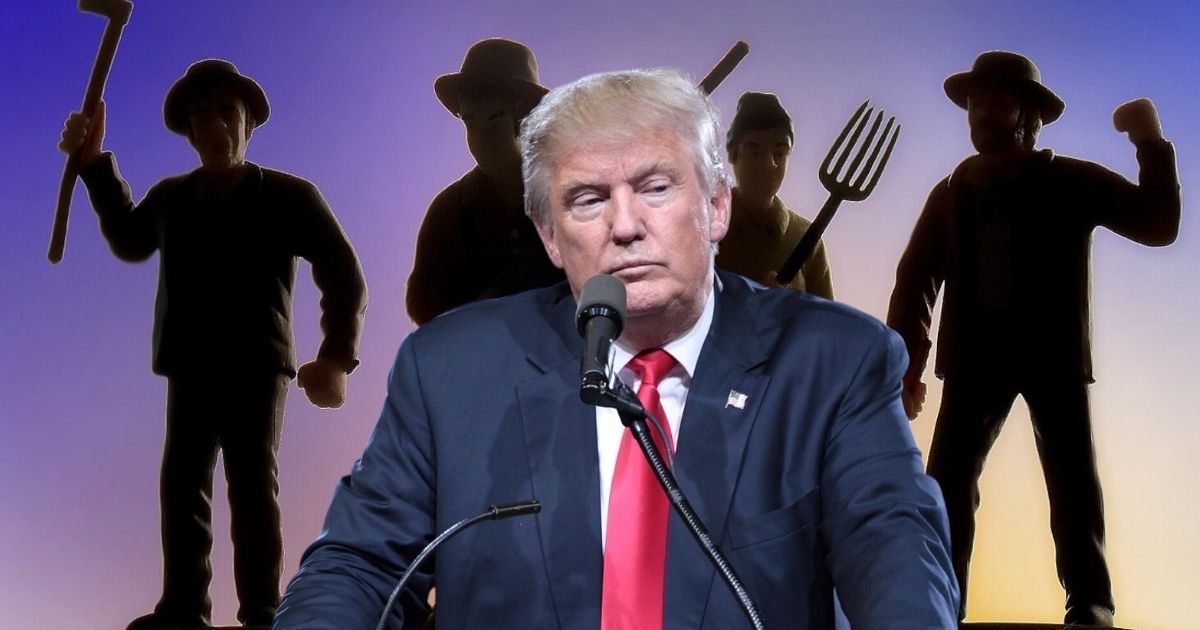President Donald Trump keeps promising farmers a lifeline from tariff cash, but the money is not his to spend at will. For months, he and senior aides have touted plans to scoop up billions from new import taxes and route it to hard-hit growers.
“We’re going to take some of that tariff money that we made, we’re going to give it to our farmers,” Trump said, arguing the aid would bridge the pain until tariffs “kick in to their benefit.” The problem is simple and stubborn: tariff revenue flows into the U.S. Treasury, and Congress decides what happens next. That is not a political interpretation, it’s how federal finance works.
The White House has been hunting for ways to keep its pledge without waiting on Capitol Hill. Officials have explored workarounds in other pots of money, and the president has shown a willingness to freeze or reprogram funds when it suits his priorities. But tariff receipts are different, and administration lawyers know it. Customs collects them, deposits them in the General Fund, and any bailout from those dollars would require explicit authorization. That legal roadblock is why the farm rescue talk keeps outpacing the policy.
Meanwhile, the reality for farm country is getting grimmer. China has slammed the door on U.S. soybeans again, a move with immediate consequences across the Midwest. According to Reuters, in September, China imported zero soybeans from the United States for the first time since 2018, while Brazil and Argentina seized the market share. Analysts say Beijing is flexing its leverage in response to Washington’s tariff blitz, and they are not mincing words about who pays the price.
During the last trade war shock, U.S. soybean exports to China collapsed by roughly three quarters from mid-2018 to mid-2019, a body blow that rippled through prices, storage, and farm balance sheets. Federal researchers and central bank economists documented the squeeze and warned that once buyers switch to Brazil, they may not rush back. The reshuffling can outlast the headlines.
Washington did cushion the hit back then, and the scale was not small. The USDA’s Market Facilitation Program paid out more than $20 billion across 2018 and 2019 to offset retaliatory tariffs, with soy farmers carrying the heaviest burden of the losses. Those programs were created through existing authorities at USDA, not by redirecting tariff cash out of the Treasury’s till. That distinction matters now, because the new promise is tied to tariff money specifically, which cannot be spent without Congress.
The politics of the bailout pitch are obvious. Tariff revenue looks massive on paper this year, and supporters say that proves the policy is working. But even big headline numbers do not unlock a presidential slush fund. The receipts show up as customs duties in Treasury statements, a data point that budget analysts track monthly. Turning those deposits into checks for farmers requires legislation, and that is where the plan keeps stalling.
On the farm, patience is thin. Commodity groups point to sustained losses from the last flare-up and warn that today’s halt in Chinese buying could be worse, given South America’s expanded capacity and China’s long-term strategy to diversify away from the United States. Unless there is a diplomatic breakthrough, the bailout fantasy will not fill a grain bin or a checking account. Farmers need predictable buyers and predictable policy. Right now, they have neither.









